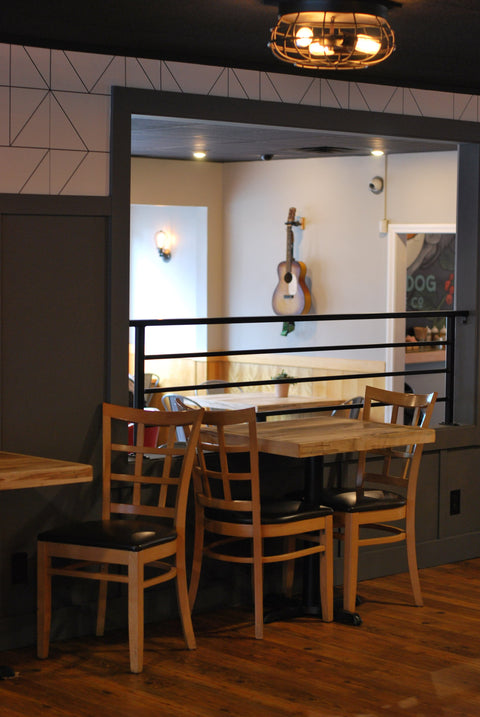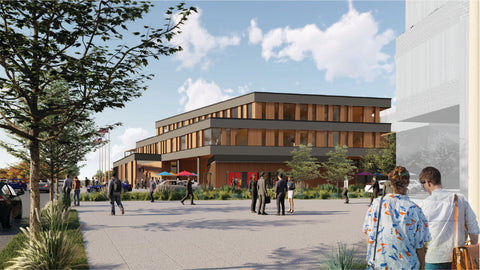What's in Steady Habits?
Varieties: Castillo, Caturra, Colombia
Growing Altitude: 2,100 masl
Processing Method: Washed
Sourced from the elevated terrains of Buesaco Nariño in southern Colombia, this exquisite coffee is cultivated at over 2,000 meters above sea level on average. Buesaco's unique geographic and climatic conditions, characterized by volcanic soil and an average temperature of 18.6 °C, provide an optimal environment for producing coffee with distinct mild taste, high acidity, and sweet notes.
The region’s coffee cultivation heritage dates back to the 18th century, growing over time to become an integral part of the local cultural, economic, and social fabric. With its first international exposure in the early 20th century, Buesaco Nariño's coffee has since been celebrated in the specialty coffee segment worldwide for its unparalleled quality, cultivated in the unique environmental conditions of the region.
As with many coffee origins, it is believed that coffee was first brought to Colombia by priests, arriving, perhaps, within a decade or two after coffee first came to the Americas via the Caribbean in the first half of the 17th century. It was likely a garden crop grown for local consumption and barter for decades. Unlike other coffee regions, we have the story of a priest named Francisco Romero, who could be called the father of commercial coffee cultivation in Colombia. The folkloric tale goes that in the early 1800’s, Father Francisco, hearing confessions in the north eastern town of Salazar de la Palmas, assigned planting coffee to his parishioners as penance for their sins. The Archbishop of Colombia heard about this and ordered all priests to adopt the practice. Commercial production of coffee expanded quickly, moving into regions where the growing conditions were ideal.
Even though it’s been 4,000 years, the soil resulting from the last major eruption of Tolima is still considered “young soil,” filled with nutrients that are no longer found at the same levels in old soil. There is a long list of elements on offer in volcanic soil that are fading or absent in other soils, such as high levels of potassium and nitrogen. Also present is something called “Boron,” which arrived from outer space a long time ago, and is important to cell walls, the creation of enzymes, and the production of flowers and fruit, meaning Boron contributes to yield. Beyond the nutrients, the structure of volcanic soil is also beneficial to coffee growing. It can soak up and hold moisture while, at the same time, facilitate good drainage so water doesn’t pool, which is not good for coffee plant roots. Coffee plants like to take a drink, then take a break. Also, volcanic soils are usually found on an incline, which also helps with drainage.
Varieties: Bourbon, Caturra
Growing Altitude: 1400–1600 masl
Processing Method: Washed
Manos de Mujer comes from the ACODIHUE cooperative in the mountainous territory of Cuchumatan, Huehuetenango near the border with Mexico. Manos de Mujer is grown and produced by indigenous women who are now the owners of their land as a result of widowing from a civil war and men migrating into the United States. ACODIHUE certified the women producers as Manos de Mujer (Women’s Hands) to recognize the hard work of these women and their contribution to both their households and to the national economy. One of the major benefits for producers belonging to ACODIHUE are the investments that the cooperative makes into the community. ACODIHUE recently launched a vegetable gardening skill building program where women can learn to farm their own vegetables to feed their families and also sell to local markets for extra income.
Only 22% of ACODIHUE's annual production goes under the designation of Café con Manos de Mujer, representing a refined selection of the cooperative's coffee. The ripe Manos de Mujer coffee is picked by hand during the harvest season, which begins shortly after Christmas and lasts until nearly Easter. The coffee is grown at an average elevation of 1500 meters above sea level. The most common varieties are Red and yellow Bourbon, as well as Typica and Caturra.
Living Income Pricing: 80% of the world’s coffee farmers live below the poverty line and current prices paid to farmers do not meet farmers’ livelihood needs. This coffee was purchased using Bellwether’s Living Income Pricing benchmark which ensures that coffee producers were paid a fair, sustainable wage. By purchasing this coffee you’re helping interrupt poverty among coffee farmers by paying a price that closes the living income gap.
Farmer Impact Fund: Bellwether’s Farmer Impact Fund further invests in coffee communities through direct balloon payments to producers who have autonomy to use the money on community and farm-level projects.
Through the Farmer Impact Fund the ACODIHUE cooperative launched a dental hygiene program for their members, 70% of whom are female farmers. Dental care in the Cuchumatan region of Guatemala is often either unattainable because of distance to the nearest clinic or cost prohibitive for coffee producers. To date, the funds provided through the Farmer Impact Fund have enabled 14 people—12 women, one man, and one child—to receive emergency dental care. Contribute to the Farmer Impact Fund today to continue investing in the producers of this region.
Variety: Bourbon
Growing Altitude: 1600 - 1800 masl
Processing Method: Washed
Busasa Coffee Washing Station, established in the Gashoho area in 2014, operates with a dedicated team of 6 full-time members and up to 150 seasonal workers. The station features 151 African drying beds and sources from 1600 farmers in the surrounding hills. Notably, Busasa’s producers receive a 20% premium above the local market rate, while staff enjoys wages nearly 60% higher than the Burundi average. This commitment extends across Matraco’s portfolio, which includes two more washing stations in Northern Burundi. Matraco also supports local farmers by distributing composted coffee pulp as fertilizer and donating seedlings.
Matraco’s coffee journey began with a truck. Founder Zuberi Matsitsi got his start transporting coffee in trailer trucks, eventually amassing a fleet of over 10 trucks. In 2015, Matraco expanded into coffee production. Today, Matraco continues to transport coffee in their own trucks, ensuring close quality oversight in an area where transportation remains something of a challenge.






